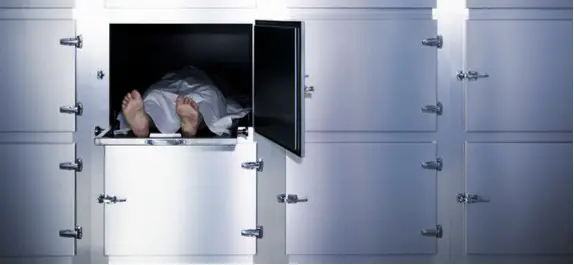When a person dies, their body immediately begins decomposing. For loved ones planning a viewing, funeral, or memorial service, this biological process can add an overwhelming time crunch to an already stressful period.
Refrigeration helps to slow the decomposition process and elongate the amount of the time that the body can be stored.
There are two kinds of refrigerators for cooling a body:
1, In Positive Temperature Morgue Refrigerators, a body can be refrigerated for about two weeks before the effects of decomposition become pronounced.
2, In Negative Temperature Morgue Refrigerators, a body can be preserved for months.
Types of Refrigeration
There are two types of refrigeration commonly used to preserve the bodies of the deceased:
1. Positive Temperature Mortuary Cold Chambers
Positive Temperature Refrigerators are commonly seen in funeral homes and mortuaries. They keep bodies between 36o Fahrenheit (F) and 39o F.
Though these freezers can slow the rate of decomposition, they do not stop it. As such, most morticians do not recommend storing a body in a Positive Temperature Refrigerator for more than two weeks.
When using a Positive Temperature Refrigerator, the effects of decomposition can begin to be seen after 24 hours with skin discoloration and physiological changes to the body.
Therefore, if you plan on having a viewing or open casket funeral more than 24 hours after death, it is recommended to embalm the body as well to further reduce the effects of decomposition.
2. Negative Temperature Mortuary Cold Chambers
Negative Temperature Refrigerators are usually used at forensic institutes for criminal investigations and unidentified remains. They are kept between -58o F and 14o F.
The low temperatures of a Negative Temperature Refrigerator freeze the body, reducing the effects of decomposition much more dramatically. As such, bodies in these refrigerators can be kept for months at a time.
Given the rise of cremation in the United States, refrigeration is becoming a more popular form of preservation. More funeral homes are offering refrigeration services each year, and some are even introducing Negative Temperature Refrigerators for long term storage.
If you are planning a funeral and wish to use refrigeration to preserve the body of the deceased, it is important to check the refrigeration capabilities of the funeral home before making arrangements.
The Amount of Time You Can Refrigerate a Body
The amount of time that you can refrigerate a body is based on the type of refrigeration you are using and your final plans for the body.
Below, I have listed the most common burial and cremation options and the amount of time that refrigeration can be used.
| Type of Service | Maximum Refrigeration Time |
| Cremation, no viewing | Positive Temperature: 2 weeks Negative Temperature: Several months |
| Cremation with open-casket funeral or viewing | Positive Temperature: 24-48 hours Negative Temperature: Several months, though the likelihood of a viewing decreases the longer the viewing is delayed. |
| Burial, no viewing | Positive Temperature: 2 weeks Negative Temperature: Several months |
| Burial with open-casket funeral or viewing | Positive Temperature: 24-48 hours Negative Temperature: Several months, though the likelihood of a viewing decreases the longer the viewing is delayed. |
| Eco-burial, no viewing | Positive Temperature: 2 weeks Negative Temperature: Several months |
| Eco-burial with open-casket funeral or viewing | Positive Temperature: 24-48 hours Negative Temperature: Several months, though the likelihood of a viewing decreases the longer the viewing is delayed. |
There are certain situations in which embalming is required, rather than refrigeration. For example, certain states have laws which require any buried body to be embalmed.
Bodies are also required to be embalmed if they present a public health risk.
Additionally, many funeral homes in the United States require any body that will be viewed to be embalmed. This ensures that the body is presentable on the day of the funeral or viewing.
If you do not want to use embalming for your viewing or open-casket funeral, it is important to make sure you find a funeral home that is willing to accommodate your request.
In the United States, the average time between death and the funeral is three to seven days. As such, refrigeration-only will not be a viable option for many open-casket funerals. For more information on how embalming can help further decrease decomposition, see How Long after Death You Can Have an Open Casket Funeral.
The Best Times to Use Refrigeration
It can be difficult to choose between refrigeration and embalming, as both can be effective for preserving the body of the deceased. When deciding between the two, it is best to consider the following:
1. Cost
According to a 2019 report by the National Funeral Directors Association (NFDA), the average cost for embalming in the United States was $750.
Contrarily, many funeral homes will include the cost of refrigeration in the body preparation costs, or request a small daily charge for refrigerator use.
If you are planning a funeral on a budget, going with refrigeration instead of embalming can save you money.
2. Time
As I discussed above, if you are looking to have a viewing or open-casket funeral more than 24 hours after death, it is typically best to use embalming instead of refrigeration.
However, if you are planning a funeral or cremation without a viewing, refrigeration is a great option.
3. Cremation

When a body is to be cremated, refrigeration is typically used to preserve the body for the short duration between death and cremation.
However, embalming may be recommended for a body that is going to be cremated if a viewing or open-casket ceremony is going to occur prior to the cremation.
Many states have legislation that requires a body to be refrigerated for 24-48 hours prior to cremation. In these states, refrigeration will be mandatory regardless of whether or not you decide to embalm.
4. Religion
There are some religions, such as the Muslim, Bahái, and Orthodox Jewish faiths, that prohibit embalming. In these situations, refrigeration is the best storage option prior to the funeral or memorial service.
5. Legality
In cases where the body is part of an investigation, a legal dispute, or is unidentified, it may be necessary to store the body for an elongated period of time.
In these cases, it is best to store the body in a Negative Temperature Refrigerator to slow the decomposition process as much as possible.
6. Environmental Impact
Embalming involves the use of hazardous chemicals that are unhealthy for both humans and the environment. Therefore, refrigeration presents a much more environmental solution for preservation.
If the body is going to undergo an eco-burial in a green cemetery, it will have to be refrigerated, as embalming is not allowed.
7. Preferences of the Deceased and Immediate Family
As with any funeral decision you make, it is important to consider the wishes of both the deceased and their immediate family. Whenever possible, it is best to honor their wishes and use the preservation method of their choice.
Funeral Home Refrigeration in the United States
Surprisingly, despite refrigeration being a viable preservation alternative to embalming, a large percentage of funeral homes in the United States do not have refrigeration on site.
Embalming was by far the most popular option for the past several decades, and many funeral homes relied on embalming as their only source of preservation for the bodies they prepped.
However, as cremation and eco-burials have become more popular, more funeral homes have invested in Positive Temperature Refrigeration options. In fact, many funeral homes are now even investing in Negative Temperature Refrigeration to further meet demand.
If you are making plans for a deceased family member or friend and plan to use refrigeration as your preservation method, it is important to discuss refrigeration with your funeral home prior to making any arrangements.

Sources:
https://ir.library.illinoisstate.edu/cgi/viewcontent.cgi?article=2059&context=etd
https://funeralcompanion.com/refrigerating-before-cremation/
https://medium.com/@descomedicalindia1/mortuary-coolers-what-makes-for-a-good-cooler-fe04b1ac222d

